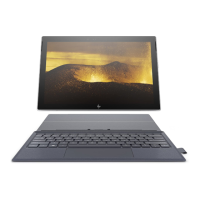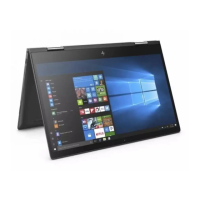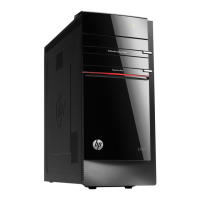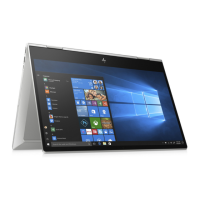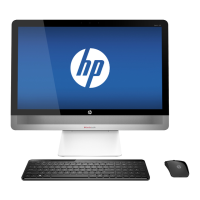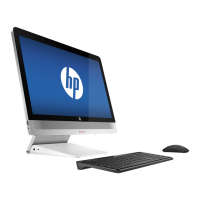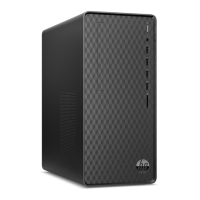System will not boot from USB ash drive.
Cause Solution
Boot order is not correct. Run the Computer Setup utility and change boot sequence in
Advanced > Boot Options.
Removable Media Boot is disabled in the Computer Setup utility. Run the Computer Setup utility and enable booting to removable
media in Advanced > Boot Options. Ensure USB is enabled in
Storage > Boot Order.
The computer boots to DOS after making a bootable ash drive.
Cause Solution
Flash drive is bootable. Install the ash drive only after the operating system boots.
Flash drive is defective. Try a dierent ash drive.
Solving Internet access problems
If you encounter Internet access problems, consult your Internet Service Provider (ISP) or refer to the common
causes and solutions listed in the following table.
Unable to connect to the Internet.
Cause Solution
Internet Service Provider (ISP) account is not set up properly. Verify Internet settings or contact your ISP for assistance.
Web browser is not set up properly. Verify that the Web browser is installed and set up to work with
your ISP.
Cable/DSL modem is not plugged in. Plug in cable/DSL modem. You should see a “power” LED light on
the front of the cable/DSL modem.
Cable/DSL service is not available or has been interrupted due to
bad weather.
Try connecting to the Internet at a later time or contact your ISP.
(If the cable/DSL service is connected, the “cable” LED light on the
front of the cable/DSL modem will be on.)
The CAT5 UTP cable is disconnected. Connect the CAT5 UTP cable between the cable modem and the
computers’s RJ-45 connector. (If the connection is good, the “PC”
LED light on the front of the cable/DSL modem will be on.)
IP address is not congured properly. Contact your ISP for the correct IP address.
Cookies are corrupted. (A “cookie” is a small piece of information
that a Web server can store temporarily with the Web browser.
This is useful for having the browser remember some specic
information that the Web server can later retrieve.)
Windows 10:
1. Type control panel in the taskbar search box, and then
select Control Panel from the list of applications.
2. Click Internet Options.
3. In the Browsing history section, click the Delete button.
4. Select the Cookies and website data check box and click the
Delete button.
82 Chapter 7 Troubleshooting without diagnostics
